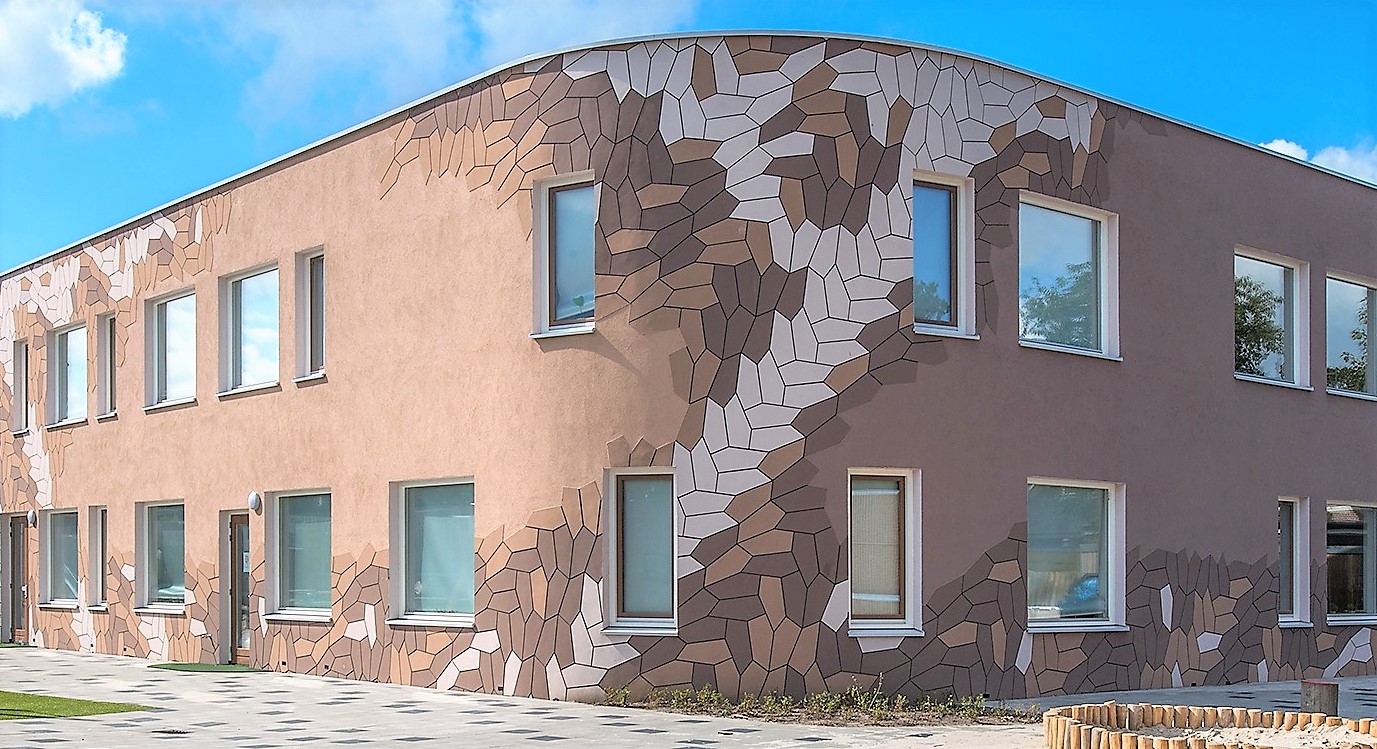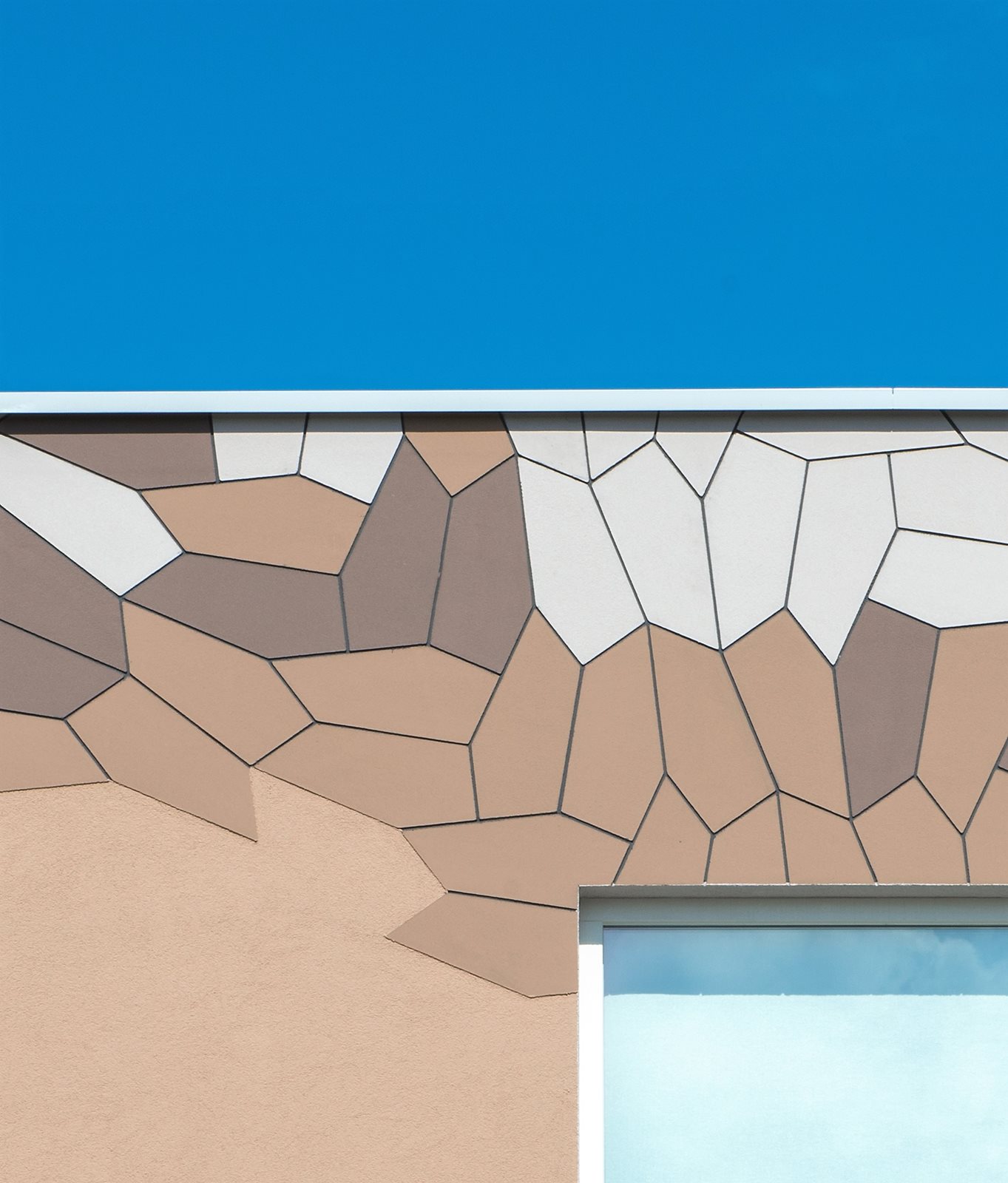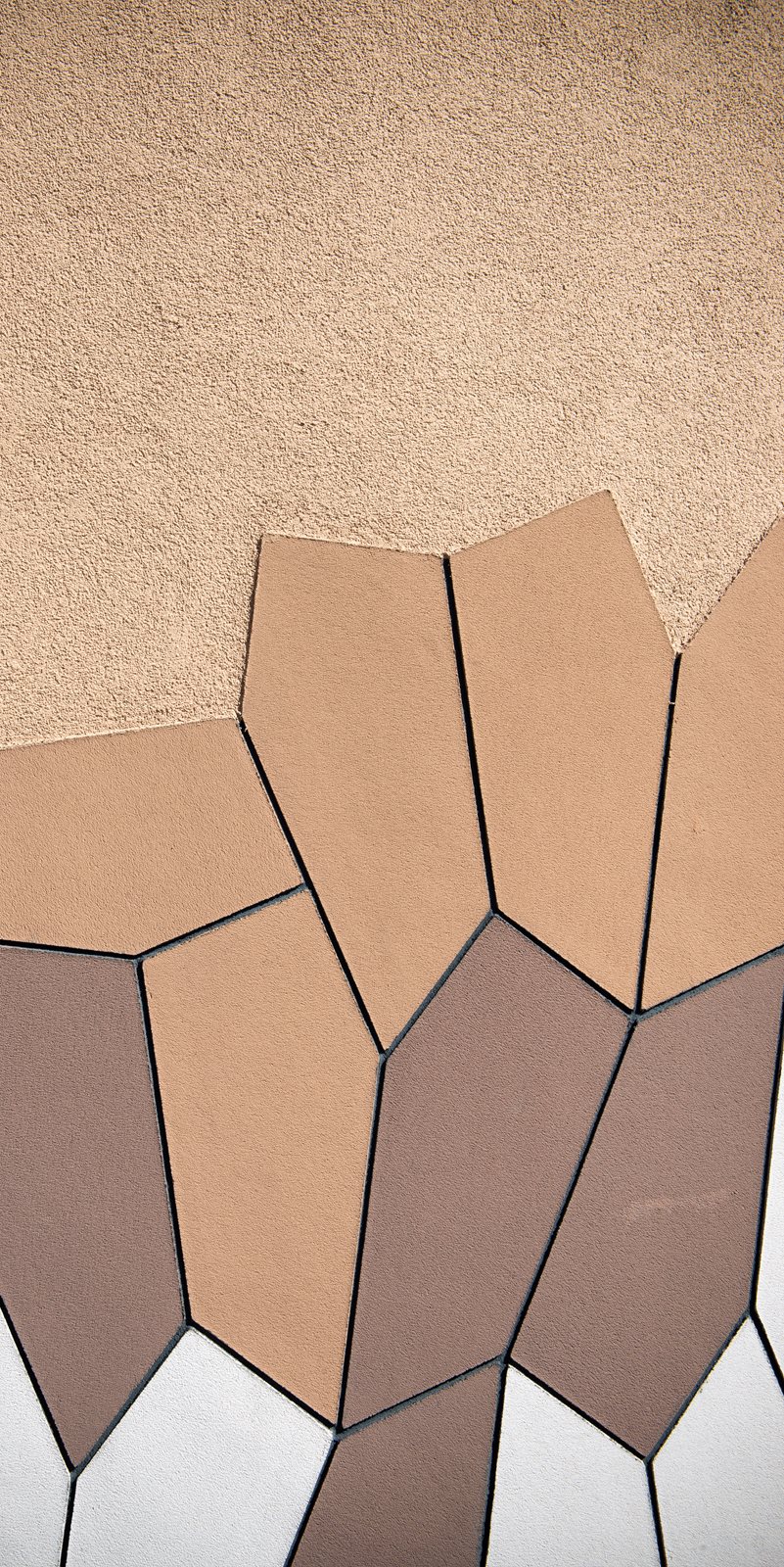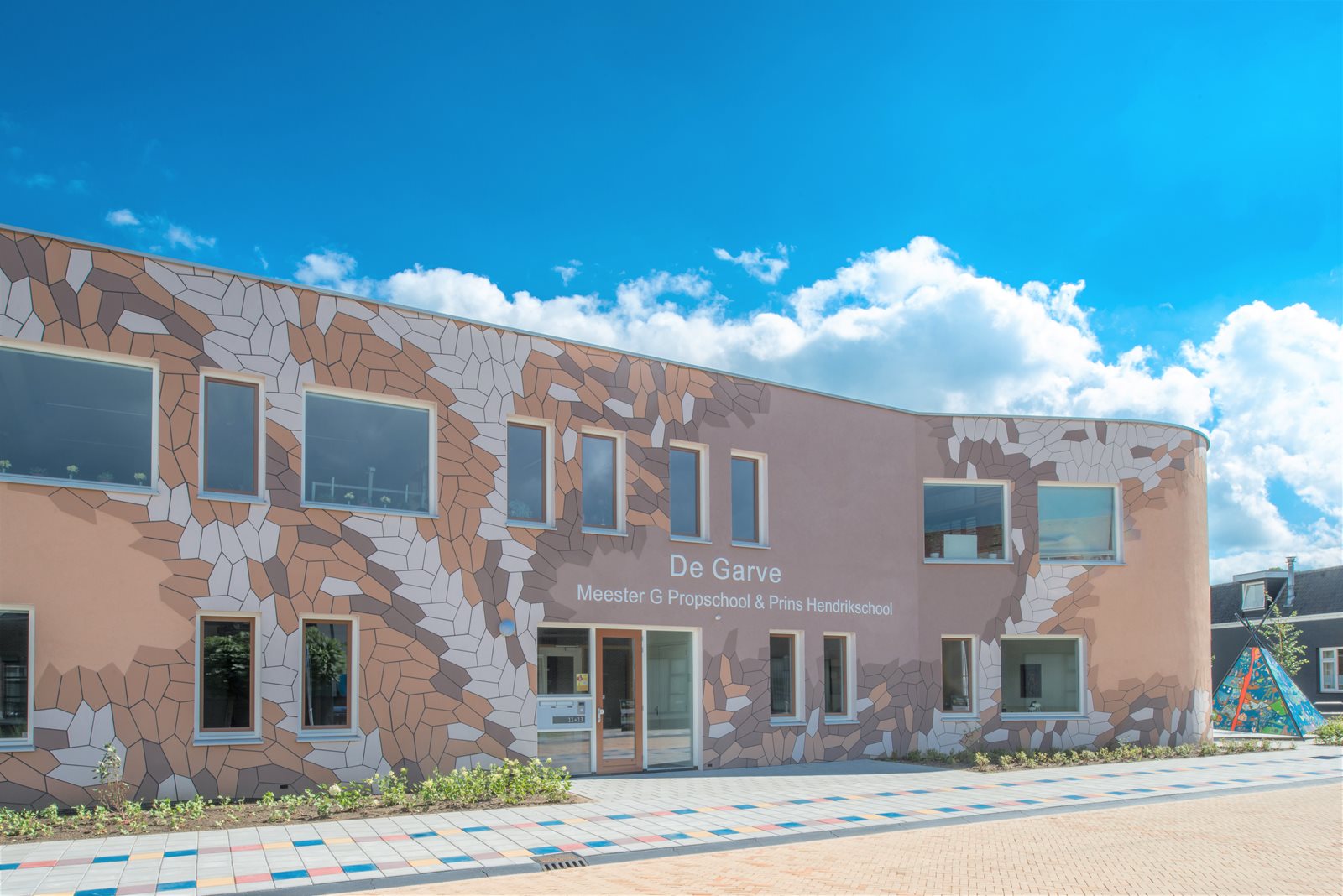
By Douglas Esser
A unique pattern of pentagons discovered by mathematicians at the University of Washington Bothell popped up in the Netherlands in the exterior design of a primary school building.
Here’s how the idea spread from Bothell and took shape across the Atlantic Ocean. A story about the discovery, made by Professors Jennifer McLoud-Mann and Casey Mann and one of their students, appeared in the Dutch newspaper NRC Handelsblad where it was read by Rob Moritz, an architect with 19 Het Atelier, a firm in the town of Zwolle.
The pattern fit with some of the ideas and problems that had been percolating in his mind for the design of a school in the town of Lochem. “You call it designer’s luck,” Moritz said.
Moritz had in mind the drawings of Dutch artist M.C. Escher, famous for optical illusions and images that fit together like a jigsaw puzzle. Moritz also had to design some round corners on the building to adapt to the property layout.

“We all were very charmed by the mathematical idea and the chance it had for this kind of application,” Moritz said.
The building combines two separate schools: Meester G. Propschool, a public school, and Prins Hendrikschool, a Christian school. Moritz reconciled various design elements with his choice of a construction material, an extruded polystyrene and stucco facade produced by STO-Isoned.
The way the beige, tan and brown pentagons mesh like corn stalks at harvest time represents the idea of two schools coming together. They call the building De Garve, an old Dutch word for a sheaf of corn.
The solar-powered building needed to be heavily insulated for sustainability. The manufacturer produced insulating cladding in the UW Bothell pentagon shapes that crawl across the curved walls in Escher-like fashion. Opened in 2017, the building is rated almost energy neutral.
“The schools, authorities and architects were all enthusiastic,” Moritz said. “For the neighbors, it took some time. But now everybody is very proud of the building and its facades.”
The building also impressed the UW Bothell professors who are happy their pattern has been commemorated in such fine fashion. Mann and McLoud-Mann didn’t know about the school in the Netherlands until they saw a tweet about it.

“We were delighted! We think the architects did a beautiful job,” they said.
In 2015, with undergraduate researcher David Von Derau, they published a paper proving a 15th way for a pentagon to tile a plane. It moved the mathematical world because it was the first such discovery in 30 years. It also was the last.
Think about covering a floor with tiles. There’s no limit to the way triangle and rectangle shapes can be tiled together without overlaps or gaps. The process is known as tessellation. With pentagons, the number is mathematically limited to 15. Tessellating the 15th pentagon produces a complex pattern that brings to mind an Escher print.
The 15th pattern is free for anyone to copy. Mann and McLoud-Mann have artwork based on the design at their home and have seen others use it in furniture and floor designs. They have heard of plans for a stained glass window of pentagons, and recently the pattern was featured in a comic strip. They’ve heard it described as a “quasicrystal” structure but never before that it resembled corn stalks.
“We had no idea when we started this work that so many people outside of the mathematics community would be interested in it. And because of the widespread interest, we have had the opportunity to interact and share with people with diverse backgrounds, interests and ages,” said the professors, who continue working with students on mathematical tiling projects in the School of Science, Technology, Engineering & Mathematics.
Von Derau (Mathematics ’15) is now an avionics software development engineer in Kent working on a rocket engine at Blue Origin, the spaceship company launched by Amazon founder Jeff Bezos. Although Von Derau no long works on pentagon tiling, he said he’s excited to see it show up across the world.




